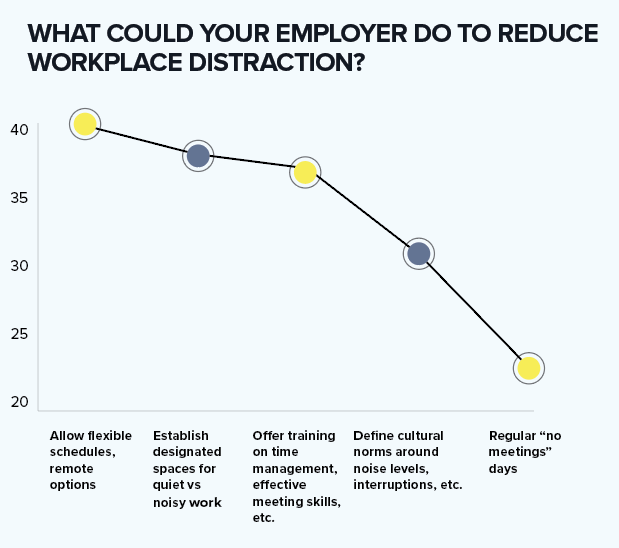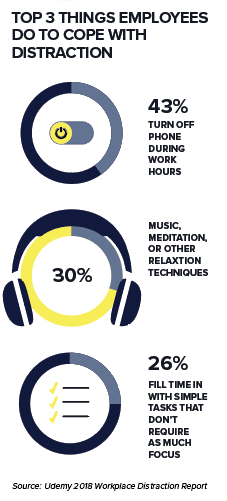Our careers will be forevermore intertwined with machines. So what responsibility does HR have in managing the relationship between human talent and digital technology?
In June this year Victorian education minister James Merlino announced a ban on mobile phone use in the state’s public schools. The purpose of the ban is to cut down on distraction and cyberbullying, but it has split public opinion. Surprisingly, the embattled government might find it has allies in Silicon Valley. Bill Gates, former Microsoft CEO, refused to give his children mobiles until they were teenagers. And current CEO of Apple, Tim Cook, has publicly said he doesn’t let his pre-teen nephew join social networks.
But it’s not just children people are worried about. Insider reports have revealed the extent to which technology is deliberately designed to be addicting to every user. Aza Raskin, the creator of infinite scrolling, has publicly stated he regrets his invention’s habit forming effects. And research published in Social Issues and Policy Review shows that passive use of social networking has a negative relationship with subjective wellbeing.
It’s a growing concern for businesses. In the workplace, we can spend our days responding to a constant stream of emails, reacting involuntarily to smartphone notifications, and interacting with digital systems ostensibly designed to make us more efficient. It’s both a wellbeing and productivity issue. To achieve truly profound innovation, deep thinking and uninterrupted workflows are required.

“The ability to get into a flow and to really concentrate and focus comes with deep work,” says Dr Kristin Alford, director of MOD (a future-focused museum) at UniSA, and HR professional. “This is why at schools we’re seeing the questioning of technology-rich environments. And in some workplaces, before a meeting, the attendees’ smartphones are collected at the door or switched off.”
In 2018 a report titled Positive Technology: Designing Work Environments For Digital Well-being was released by Deloitte Insights. It outlined how workplace design might be reimagined in order to ensure technology’s negatives don’t outweigh the positives.
As examples of the benefits of technology, the report highlighted greater and borderless communication opportunities, potential reductions of expense in terms of money and the environment, and efficiencies that come with GPS systems, real-time translation services and CRM systems that help with meeting customer expectations.
At the same time, particularly with highly distractive and sometimes addictive aspects of the design, a wealth of technology can cause a poverty of attention. The blurring of time between personal and work lives results in a reduction in employee wellbeing as the always-on nature of work causes greater stress and burnout.
“Technology benefits us in many ways when it comes to the workplace. It has physically freed us from our desks, increasing flexibility,” says Jen Fisher, chief wellbeing officer for Deloitte US and one of the authors of the report. “But it has also eliminated natural breaks which would take place during the workday.”
In the past, when we left work, we couldn’t bring it home with us. Then the home computer became common. But today, it’s not just at home. Work is everywhere. On the train, in the park with our children, at the beach while on holiday.
“We now have to intentionally create that space on our own, which is hard to do because of the habit-forming design of technology,” says Fisher. “And creating that space isn’t as simple as putting down your phone, because we feel physiologically compelled to engage with it. Even just the anticipation of getting an email outside of work hours and the pressure to be responsive can cause anxiety and stress.”
Some think that the right technology can help. Aaron McEwan, vice president, research & advisory at Gartner says that people in their private lives interact effortlessly with virtual assistants, and appreciate the algorithmic curation of services such as Netflix and Spotify. But in the office, they’re constantly bombarded with emails, they’re forced to use collaborative tools that continually distract, and they must navigate badly designed apps just to fill out a leave request form.
“We’re facing a future where work requires deep thought,” says McEwan. “The creative pursuits, the innovation, the deep social work which is most valued and least likely to be automated actually requires time and space. I think our consumer technology might save us from that before our work technology does.”
 Oh, the humanity
Oh, the humanity
As technology has become more accessible and more all-encompassing, our understanding of the importance of the human aspect of work is actually improving, says Rhonda Brighton-Hall FCPHR, CEO and co-founder of MWAH (Making Work Absolutely Human).
“We still haven’t lost our capacity and our understanding of how important it is to be with human beings. Sitting next to someone who’s real – who you can feel, smell, see, touch – this is still very important. Technology will continue to grow and change and, from a workplace perspective, we absolutely need to be deeply involved in how we manage the relationship.
“Virtual reality professionals will tell you that soon there will be no on-the-job learning as we know it. They say you will sit at your desk and as you need to learn something, you will pick up the headset, learn it in five minutes then put the headset down. But that’s not how we learn. We might learn simple things that way, but if I needed to learn something that was more thoughtful, I’m probably better sitting in a classroom with an expert, and I’ll learn from the people next to me, too.”
McEwan says Gartner research has identified a workplace mental health epidemic. Individuals are stressed and exhausted, and some of the reasons behind this are related to the endless transformations and efficiency drives – most often technologically based – that have been going on over the last decade.
Technology not only causes constant change and lower perceptions of job security. It also means work has been encroaching into our personal lives at the same time as making workplaces less human.
“Work/life balance is the number one reason people will seek a new job and the number three reason why people leave their job,” says McEwan. “People have hit the wall in terms of what they’re capable of giving and it is showing up in our data as a massive reduction in discretionary effort. You know what I think organisations need to do? I would very rarely quote Marie Kondo in any serious discussion, but organisations need to declutter!’”
Tech culture
Coca-Cola European Partners in 2017 began a massive program of change that was aimed at exactly that – decluttering [see box on the left]. The business’s goal was to give a collective one-million hours per year back to its 23,500 employees by removing low-value, repetitive and frustrating activities and processes.
“When you’ve got a workforce that’s got nothing left to give and that is on the edge of burnout, the only option is to actually remove things that get in the way of them doing a great job,” McEwan says.
It’s working for Coca-Cola European Partners, who are over half way to their goal. The process is being managed by the company’s VP of HR strategy and operations, Nico Orie, who believes it is the role of HR to manage the human-machine relationship.
“Technology is not always moving us in the right direction,” says Orie. “It doesn’t always deliver a better quality of work life or private life. HR may be the only function capable of moving organisations in the right direction on these topics, and that’s our focus as part of our digital workplace efforts.

“We know that aligning HR strategy and processes to organisational culture drives the talent and business outcomes we’re aiming to achieve. Given that, we’re really maintaining what employees value and need – the day-to-day experience of the culture – as our touchstone when examining HR improvements.”
Alford agrees that it’s the HR leader who should manage the relationships between staff and technology.
“The HR lead is critical. They are responsible for setting the CEO’s vision of what the culture should be. They design the culture that will support the strategies of the CEO and of senior management. Our relationship with technology is all about culture.”
Such culture, says Alford, is reflected in and developed by the ways people speak about technology. “The stories we tell around the technology we’re using are quite critical. Is the technology frustrating and a distraction, or can we set up a culture around technology as a transformational tool where people are privileged as the lead workers, and robotics, AI and automation are there to make their jobs easier, more interesting and safer?”
Just as important as the culture around technology, says Brighton-Hall, is the culture away from technology. People need to feel confident that they’re working in an environment where they won’t be judged harshly for not attending a meeting or for not copying numerous people into an email. They should have confidence that their colleagues will share any necessary information with them.
“This comes from empathy, understanding and good relationships – the sorts of skills and traits that have long been underestimated. If you get this right, then just because a person doesn’t attend a meeting or is left off an email list, it doesn’t mean they will be out of the loop.”
In terms of who needs to take responsibility for ensuring a healthy relationship between technology and its users, Fisher says it must be shared between the employer and the employee.
“Employees need to be actively involved as well because self-awareness is crucial to creating healthier technology habits. Organisations can help educate, guide and nudge healthy behaviours, but if the culture of the organisation does not uphold these, and if individuals are not actively involved, then it’s likely that little will change.”
This article originally appeared in the August 2019 edition of HRM Magazine.
Rhonda Brighton-Hall will be sharing her insights at this year’s National Convention and Exhibition in Brisbane. Read the full program here.

